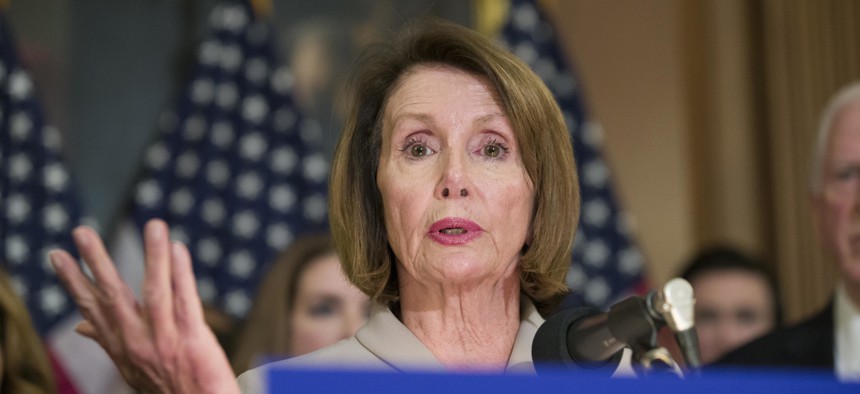The Trump administration disputed Pelosi’s characterization of the shutdown’s impact on the State of the Union address. But the president alone doesn’t get to decide whether he’ll appear before Congress. The Constitution states that the president shall “from time to time give to the Congress information on the State of the Union.” The nation’s founding document says nothing, however, about a formal speech, or even that the presidential message be delivered every year.
Indeed, as Pelosi noted in her letter, presidents throughout the 19th century issued their State of the Union message in writing. In 1913, President Woodrow Wilson revived the practice started by George Washington, and continued by John Adams, of delivering a formal speech to Congress.
Presidents speak to Congress only by invitation and a joint resolution passed by the House and Senate. This is usually a formality, but if the 26-day shutdown continues, it won’t be this year. Weeks after Pelosi extended an invitation to Trump, Congress has yet to pass the resolution confirming the offer.
Neither the White House nor the Republican leadership in Congress responded to Pelosi’s letter in the initial hours after her office released it on Wednesday morning. But a spokesman for Senate Majority Leader Mitch McConnell noted on Twitter that although Pelosi cited the shuttered government as a reason for wanting to reschedule the speech, the shutdown had already begun by the time she invited Trump. Later in the afternoon, Homeland Security Secretary Kirstjen Nielsen contradicted Pelosi’s stated reason for wanting to reschedule the presidential address. “The Department of Homeland Security and the US Secret Service are fully prepared to support and secure the State of the Union,” she tweeted. “We thank the Service for their mission focus and dedication and for all they do each day to secure our homeland.”
Although a president has never delivered a State of the Union address while major parts of the government have been closed, the speeches have taken place in the midst of tense battles with Congress. In 1998, President Bill Clinton appeared before a Republican-led Congress in the Capitol just over a week after the revelation of his affair with Monica Lewinsky, which would lead to his impeachment by the House later that year. His State of the Union address the next year occurred while he was on trial in the Senate.
Conceivably, Trump could simply choose another venue to deliver a State of the Union address, so long as he prints out a written copy and sends it to the Capitol. “He could make it from the Oval Office if he wants,” Pelosi told reporters.
The dispute over the annual speech could be rendered moot, of course, by a swift end to the government shutdown that began last month. That, however, appears unlikely. There have been no high-level negotiations between the White House and Democratic leaders since Trump stormed out of a meeting last week with Pelosi and Senate Minority Leader Chuck Schumer.
On Wednesday, the president met with House lawmakers from the bipartisan Problem Solvers Caucus. But before the meeting, Democratic members of the group reiterated the primary demand of their party’s leadership—that Trump allow the government to reopen before any substantive negotiations over border security take place. A statement from the White House after the meeting said it was “constructive” but did not point to any notable progress. “They listened to one another and now both have a good understanding of what the other wants,” White House Press Secretary Sarah Huckabee Sanders said. “We look forward to more conversations like this.”
In the Senate, attention turned to persuading the president to relent on his demand for border-wall funding, even if only for a few weeks. A letter from a bipartisan group of senators, circulating throughout the Capitol, called on Trump to support a three-week continuing resolution to reopen the government while negotiations on a border-security bill take place, according to a draft published by Axios. The offer appeared similar to one floated by Senator Lindsey Graham of South Carolina over the weekend, which Trump rejected.
Meanwhile, the Trump administration has moved to recall thousands more furloughed federal employees to work without pay in an effort to mitigate the shutdown’s impact on the public—and, it seemed, forestall a mounting political backlash against the president. Polls released over the past several days show that Americans, by a wide margin, blame the president for a shutdown he once said he’d proudly own.
It was against this backdrop that Pelosi sent her letter on Wednesday, an effort to turn the screw ever tighter around the president and remind him of one key source of leverage she holds over him. He might have the power to keep the government closed. But she can effectively bar him from the Capitol, and deny him the best occasion he’ll have all year to make his case to the public.







